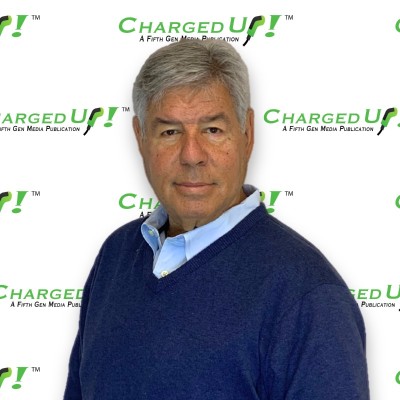The Secret Service Just Exposed a Telecom Weak Spot. Here's Why EV Charging Leaders Should Care.
- Rich Berliner

- Sep 30
- 3 min read

On September 23rd, the Secret Service announced it had quietly dismantled a clandestine telecom network scattered around New York City and its suburbs. More than 300 SIM servers and 100,000 SIM cards were seized. Officials said the system posed an “imminent telecommunications threat” and could have crippled cellular service during the U.N. General Assembly.
The headlines framed it as national security drama. But for anyone building or operating EV charging networks, there’s a quieter lesson: the infrastructure your business depends on can fail, and customers don’t care why. Whether the cause is sabotage, a fiber cut, or just a botched software update, drivers only remember whether the charger worked—or didn’t.
A Market Growing on Fragile Wires
The U.S. charging map keeps filling in. As of late summer, more than 232,000 public charging ports were in operation, with over 58,600 DC fast ports and the first 110 NEVI-funded stations lighting up highway corridors. That’s the canvas for every vendor’s 2026 growth strategy.
But that same growth is layered on top of wireless systems that are far from invincible. When AT&T suffered a nationwide outage in February 2024, a single misconfigured network element blocked 92 million calls, including 25,000 emergency calls, for nearly half a day. No hackers, no sabotage—just complexity buckling under its own weight.
For the EV industry, that translates into a core vulnerability: payments, pricing updates, roaming, diagnostics, and even remote resets all ride on cellular. If the connection fails, the charger quickly becomes a stranded box of hardware.
Outages don’t care about your quarterly target. What wins deals in a crowded field is proving that you’ve planned for ‘sunny-day’ failures—and your customers barely notice them.
Why This Matters for Operators and Landlords
Connectivity isn’t a side detail; it’s part of the customer promise. A payment failure on a Saturday afternoon doesn’t just hit utilization metrics—it risks angry reviews, lost store traffic, and social posts that outlive the outage.
For charge point operators, that makes resilience a commercial differentiator. A regional outage can tank your uptime score for the month, triggering penalties under NEVI-funded contracts and jeopardizing renewals. For landlords and developers, the risk is reputational: a lot with “dead screens” quickly feels like a liability, not an amenity.
The real question isn’t whether your vendor uses cellular. It’s how they ride through cellular failures. Do they fail gracefully, with cached pricing, offline authorizations, or even a temporary free-vend? Or do they fail ugly, leaving drivers stranded and posting photos of blank screens?
Reliability Becomes the Growth Story
In a market this competitive, resilience is fast becoming a tie-breaker. Buyers don’t expect miracles—they expect systems designed to bend without breaking. Multi-carrier SIMs, local fallbacks, out-of-band reboot paths, redundant time sources—these sound like IT details, but they’re now part of the sales story.
“Treat resilience like a product feature,” Reynolds adds. “If your network can transact, message customers, and self-heal when the phones go dark, that’s not IT—that’s sales enablement.”
This shift has financial teeth. CFOs should already be modeling what a single carrier outage could cost in lost sessions, uptime penalties, and customer churn—and weighing that against the cost of redundancy. The math is changing: resilience is cheaper than failure.
The Bottom Line
The Secret Service takedown is a reminder, not a plot twist. Telecom fragility isn’t hypothetical—it’s a recurring fact. The EV charging networks that win 2026 will be the ones that can prove, in writing and in practice, that their systems keep transacting when the carriers stumble.
For CPOs, that means designing your network for graceful degradation. For landlords, it means demanding resilience in every lease. For vendors, it means turning reliability into the loudest part of your sales narrative.
The charging market is crowded. The map keeps expanding. And in the next phase of competition, uptime isn’t just an SLA metric—it’s the marketing channel that speaks loudest of all.
About Us
ChargedUp! is one of the most widely read publications in the EV charging space. Our approach is to take topics that are of interest to everyone and mention companies that provide best-in-class approaches.
To discuss including your products or services, contact us at info@chargeduppro.com. At ChargedUp!, we are committed to keeping businesses and individuals informed about the evolving EV landscape.
For more updates and insights, subscribe to our newsletter at chargeduppro.com.






Comments